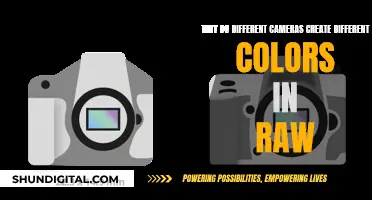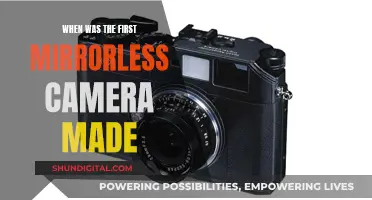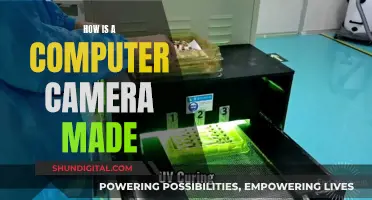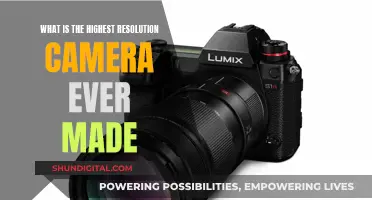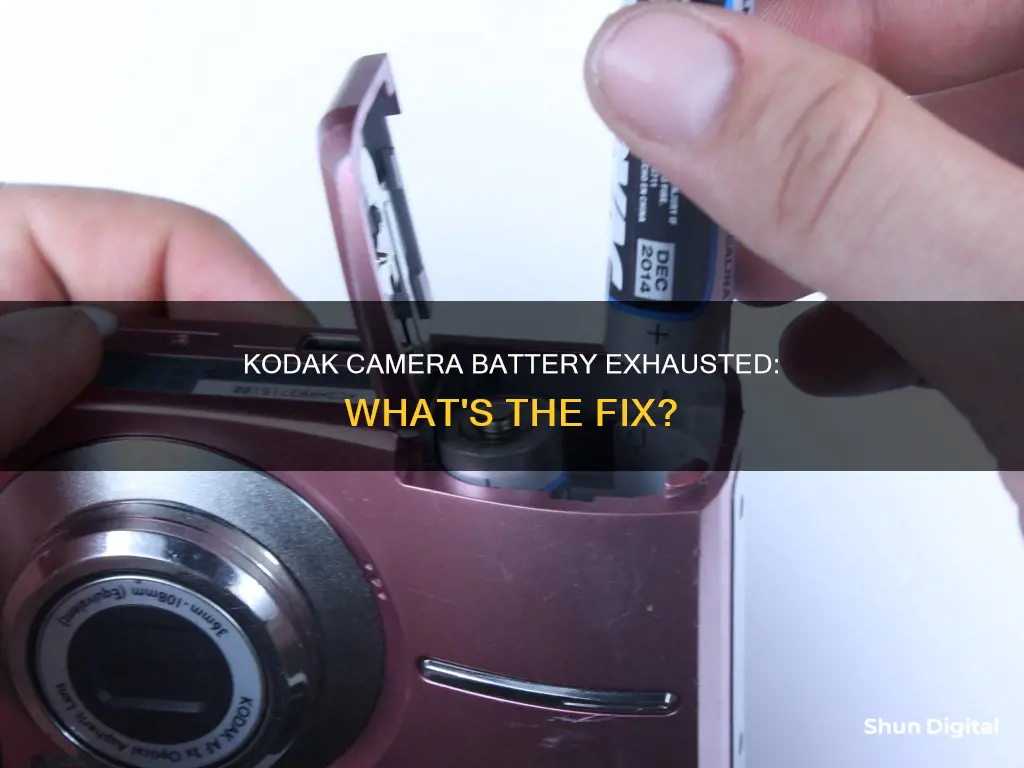
If your Kodak camera is displaying a battery exhausted message, it could be due to a variety of reasons. The most common cause of battery exhaustion is simply running out of power, which can occur if the battery is used too frequently or the camera is left on for extended periods. Other potential causes include overcharging, exposure to extreme temperatures, or using the wrong type of battery for your camera. To resolve this issue, ensure that your battery is fully charged, particularly if you use rechargeable batteries. If charging doesn't help, you may need to replace the battery or switch to a different type, such as alkaline or lithium batteries. Additionally, check your camera's settings to ensure the correct battery type is selected, and make sure to store your camera and batteries in a cool, dry place to avoid battery exhaustion in the future.
| Characteristics | Values |
|---|---|
| Cause of "Battery Exhausted" message | The battery is used up and can no longer power the camera. This can be caused by the battery being used too often, the camera being left on for too long, overcharging, storing the battery in extreme temperatures, or using the wrong type of battery. |
| How to deal with "Battery Exhausted" message | Ensure the battery is fully charged. If the problem persists, try replacing the battery, using a different type of battery (e.g., alkaline or lithium), or using a backup battery or power adapter. |
| How to avoid "Battery Exhausted" message | Regularly charge the battery and do not leave it in the camera for extended periods. Use the correct type of battery for the camera, and store the battery in a cool, dry place, avoiding extreme temperatures. |
What You'll Learn

The camera may be left on for too long
If your Kodak camera is displaying a "battery exhausted" message, it could be because the camera has been left on for too long. This can cause the battery to drain, even if it is not being used for taking pictures or videos.
To prevent this from happening, it is recommended to turn off the camera when it is not in use. If you plan on not using the camera for a few days or weeks, it is best to remove the batteries and store them in a safe place. This will help to preserve the battery life and ensure that the camera has sufficient power when you need to use it.
In addition to turning off the camera when not in use, there are a few other things you can try to troubleshoot the "battery exhausted" issue. First, check your battery settings and ensure that they are correct for the type of battery you are using. You can usually find this information in the camera's menu or setup section. If the settings are incorrect, adjust them to match your battery type.
Another possible solution is to replace the batteries with a fresh set. Make sure you are using high-quality batteries and that they are inserted properly. Additionally, check that the batteries are fully charged before inserting them into the camera.
If you continue to experience the "battery exhausted" message even with fresh batteries, there could be an issue with the battery terminals. Try cleaning the terminals with a soft cloth or a pencil eraser to remove any dirt or corrosion. If the problem persists, you may need to seek professional repair services.
Charging Kodack Z650 Camera Batteries: A Step-by-Step Guide
You may want to see also

The battery could be overcharged
If your Kodak camera says "battery exhausted" despite being charged, the battery could be overcharged. Overcharging can cause the battery to degrade faster, reducing its charge capacity, lifespan, and performance. Lithium-ion batteries, in particular, can be susceptible to overcharging, which can lead to safety risks such as overheating and, in rare cases, catching fire.
To prevent overcharging, it is important to follow the manufacturer's guidelines for charging and to use original or certified power chargers. Off-market chargers may have different power delivery specifications, which can impact the battery's performance and safety. Additionally, it is recommended to avoid charging your device overnight or for extended periods of time, as this can also accelerate battery ageing.
If your battery is overcharged, you may notice signs of damage such as a bulging or swollen battery casing. In some cases, the battery may become hot to the touch or start to smoke or vent flames. If you notice any of these signs, it is important to stop using the battery immediately and consult a professional for advice.
To prevent overcharging, it is also important to store your camera or battery in a well-ventilated area and avoid exposing it to high temperatures. Keeping the device within the optimal temperature range will help maintain the health of the battery and prevent heat-related damage.
While modern batteries often have built-in protection against overcharging, it is still important to follow best practices for battery care and maintenance. This includes using the correct type of battery for your device, ensuring proper ventilation during charging, and storing the battery in a cool, dry place when not in use.
Charging Your ADT Doorbell Camera: Quick and Easy Steps
You may want to see also

The battery might be stored in extreme temperatures
Extreme temperatures can have a significant effect on the performance and lifespan of a battery. Both hot and cold temperatures can impact the chemical reactions occurring inside a battery, which in turn affects the battery's output capability and degradation over time.
When exposed to hot temperatures, the chemical reactions within the battery speed up, leading to increased output but also accelerated degradation. This results in a shortened lifespan for the battery. Additionally, high temperatures can cause irreversible damage, such as sulfation, paste shedding, and physical defects. Prolonged exposure to heat should be avoided to prevent long-term issues.
On the other hand, cold temperatures slow down the chemical reactions in the battery. While this can prolong the useful life of the battery by slowing degradation, it also leads to lower battery output capability. Cold temperatures can expose underlying degradation issues, causing the battery to appear to stop working instantaneously.
Therefore, if your Kodak camera's battery is stored in extreme temperatures, it may be more prone to exhaustion. Exposing the battery to extreme heat or cold can impact its performance and lifespan, leading to faster depletion of its charge.
To mitigate the effects of extreme temperatures, it is recommended to store batteries at moderate temperatures and avoid prolonged exposure to heat or cold. Keeping the battery charged and ensuring proper maintenance can also help prolong its lifespan.
Lithium Batteries: Powering Your Camera, What You Need to Know
You may want to see also

The incorrect battery type may be selected in the camera's menu
If your Kodak camera says "battery exhausted", it may be because the incorrect battery type is selected in the camera's menu. This can be fixed by finding out which type of battery is currently in your camera and checking it against your camera's current settings.
To do this, press the MENU button, then go to the Setup Menu, and finally, Battery Type. Here, you can check that your battery matches the type selected in your camera.
If you have the right battery type selected but are still encountering issues, there are several other possible solutions. Firstly, ensure that you are charging your camera in the correct order. According to Nikon's answers forum, first plug the USB cable into the charging adapter, then plug the adapter into a wall outlet, and finally, connect the other end of the USB cable to your camera. Make sure that your camera is powered off while doing this.
Secondly, try cleaning the terminals inside the lid of the battery compartment. You can do this by scraping them with a screwdriver or using a pencil eraser.
Finally, if you are still encountering issues, you may need to get a new set of batteries.
Is Your Fujifilm Camera Charging? Here's How to Know
You may want to see also

The charger may not be connected in the correct order
If your Kodak camera is displaying a "battery exhausted" message, it could be because your charger is not connected in the correct order. This is a common issue with other camera brands, such as Nikon, and there are a few things you can try to resolve this.
Firstly, ensure that you are connecting the charger in the correct order. The correct order is as follows: connect the USB cable to the charging adapter, then connect the adapter to the wall outlet, make sure your camera is turned off, and finally, connect the USB cable to your camera. It is important that you perform these steps in this specific sequence.
If you own a Nikon camera, the manufacturer's answers forum recommends a particular sequence for charging your device. First, plug the USB cable into the charging adapter. Next, connect the adapter to a wall outlet, and lastly, attach the other end of the USB cable to your camera, ensuring that it is powered off. Again, it is crucial to adhere to this precise order.
In some instances, the issue may not be related to the charging sequence but rather to the battery type selected in your camera's menu. To verify this, determine the type of battery currently in your camera and cross-reference it with the settings. To do this, press the MENU button, navigate to the Setup Menu, and select Battery Type. Adjust the settings to match your battery type if they do not already.
By following these steps and ensuring that your charger is connected in the correct order, you may be able to resolve the "battery exhausted" issue with your Kodak camera.
Understanding Camera Battery Labels: S and T Explained
You may want to see also
Frequently asked questions
This could be due to a variety of reasons. Firstly, check that your battery settings are correct and that you have selected the right battery type in your camera's settings. Secondly, ensure that your batteries are properly charged, as charging times vary depending on the battery capacity. Lastly, check that your charger is connected in the correct order.
This could be due to the incorrect type of battery being used. Try switching to Lithium batteries or rechargeable batteries. Additionally, check that your battery door cap is not damaged, as this could be causing the error message.
This could be due to faulty battery terminals. Try cleaning the terminals with a pencil eraser or scraping them with a screwdriver. Alternatively, try the "vinegar trick".



